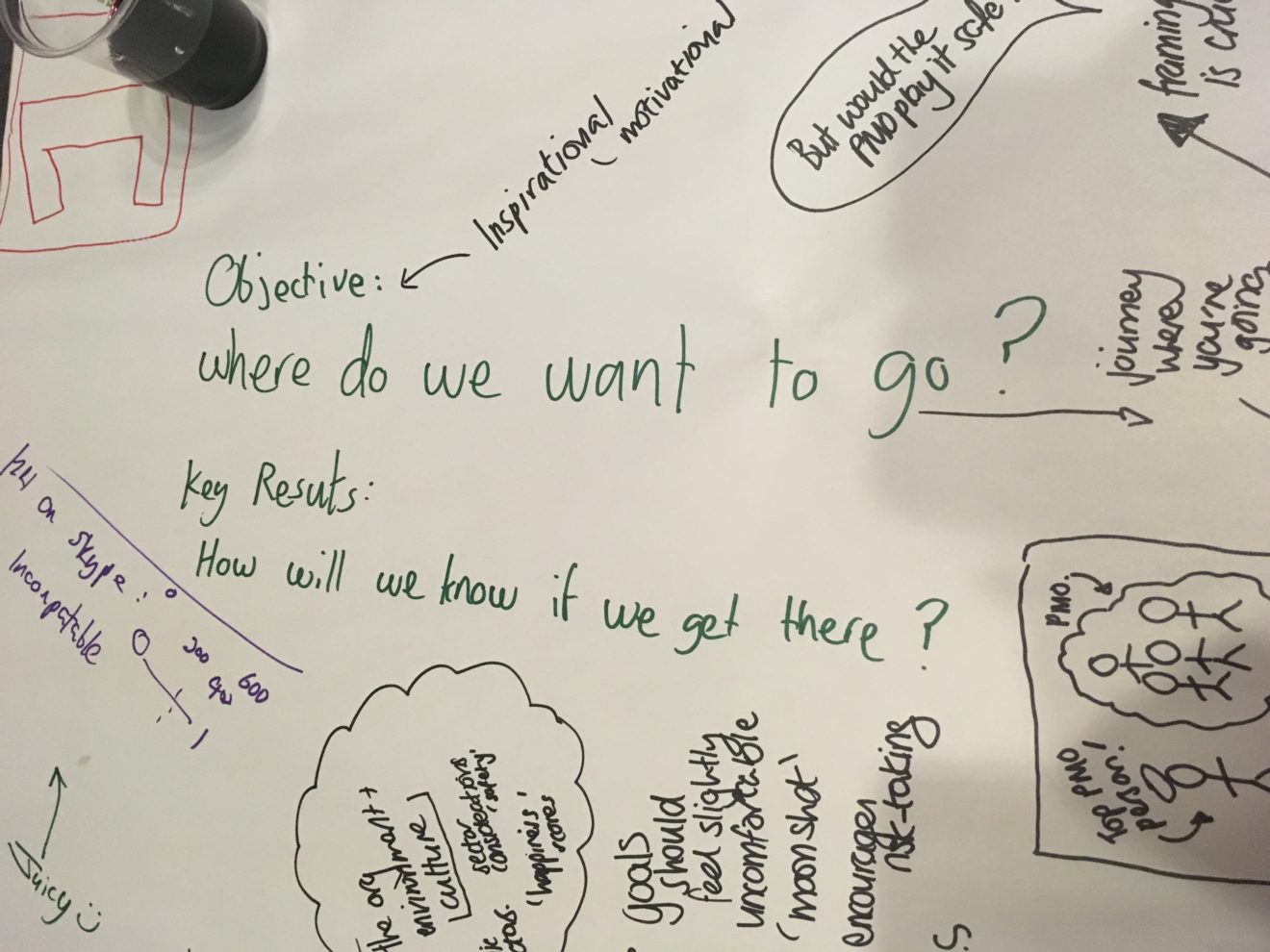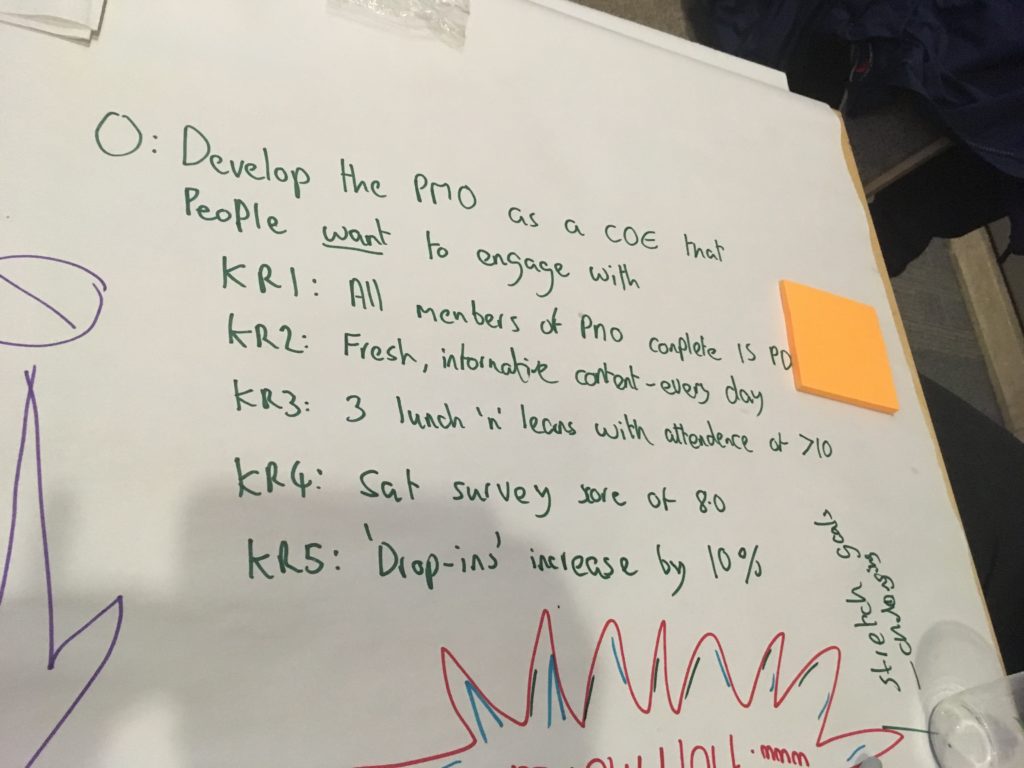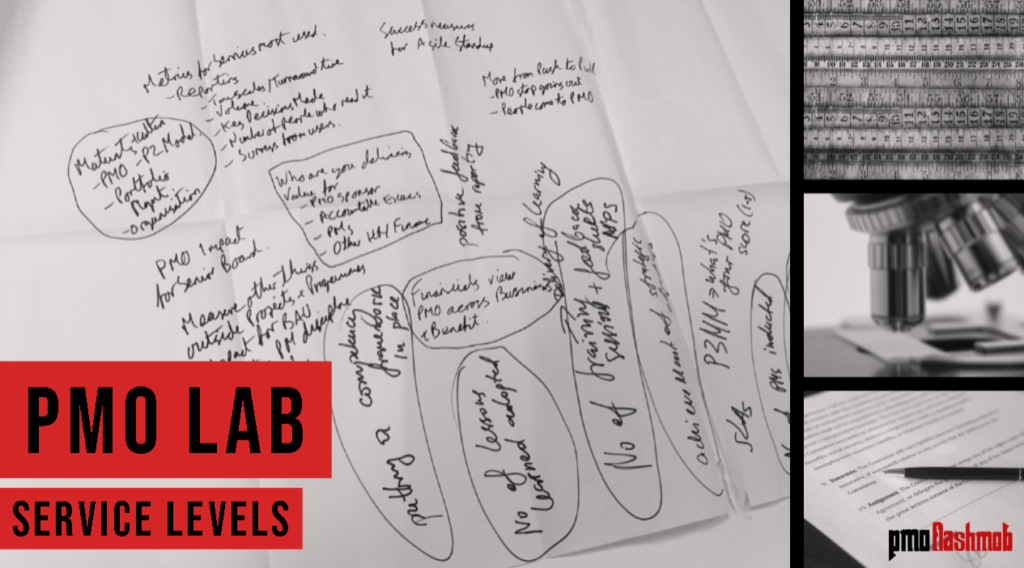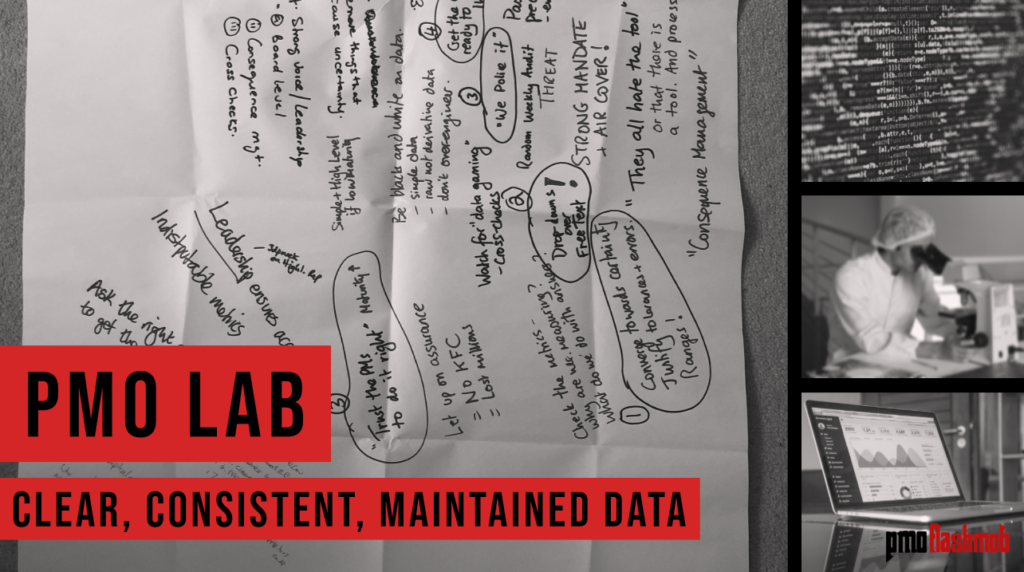You can find all our articles and past events
Free Articles | Inside PMO | PMO Conference | PMO Book Shelf
PMO Lab: OKRs
We had the first PMO Lab at the April PMO Flashmob held at Parliament UK. The PMO Lab is all about getting deeper into the themes that are explored in the Inside PMO Reports. It’s an opportunity for the community to learn from each other too. Over the next week, we’ll be sharing the lab results from the session in a series of posts.
The sessions were about exploring PMO KPIs, Metrics and Measures. It wasn’t about coming up with a load of different measures and metrics, it was more about exploring themes around that – perhaps there are different ways of thinking about this – or maybe people have some models or processes to share. We didn’t know what we would come up with.
At the session there were different lab benches with different areas of related subjects being looked at, prodded and poked to see what came out.
Donning the white coat, let’s have a look at OKRs – Objectives and Key Results. If you’ve not already got an understanding of what OKRs are and how they are used, we referenced an article which gives a great overview to it and also its been put into a PMO context already.
[Have a look at the article from Hot PMO]  The session looked at Objectives and the Key Results and the discussion was centred around a couple of things – would the PMO play it safe when it comes to setting an inspirational and motivational objective? And as a result of that, would the key results – or goals – not be stretched enough, again playing it safe.
The session looked at Objectives and the Key Results and the discussion was centred around a couple of things – would the PMO play it safe when it comes to setting an inspirational and motivational objective? And as a result of that, would the key results – or goals – not be stretched enough, again playing it safe.
The whole idea of using OKRs was about goal setting for the PMO – in other words, using it on the PMO itself, so the PMO Manager and the team are all involved in setting it up.
But would everyone feel comfortable enough to set goals that are stretch – called ‘moonshots’ – and encourage risk-taking? There were discussions about this being potentially self-sabotaging for the PMO, how would it feel not to be able to meet the goals that it has set?
There will be different approaches depending on the organisation and the culture the PMO sits within – what is ‘comfortable’ goals for one PMO will be ‘stretch’ for another.
It is certainly a good exercise to undertake with everyone in the PMO sharing their thoughts about it.
Finally, the objective was discussed in terms of a journey that needs to be undertaken by the PMO – where do we want to get to – and how this is ultimately something the PMO can do in isolation. The PMO is there to provide services and support based on what the business needs – so it stands to reason that the senior management needs to back the objective – and be totally on board with the key results it is setting.
Twenty minutes of discussions don’t do it justice, but hopefully, it’s given you something to think about when it comes to looking at improvements in the PMO that everyone can get behind. 




